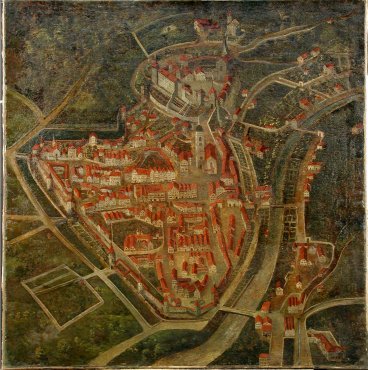The butcher's door and its guardian
Undoubtedly, the medieval citizens felt safe behind their city walls, even if they were not massive fortifications. The inserted towers served as reinforcements in the wall ring as well as for guard services.
The following can be assumed as towers for that time: the Obertorturm, the Pulverturm (Malteserturm), the Keichenturm, (prison tower with the Totentor), the high tower (Schelmenturm or Hanikelturm at the Postplatz; in the Middle Ages no gate led through here, but only a small alley but only a small alley along the Mühlbach), the round blacksmith's tower east of the lower gate, the slender Hegisturm west of the Sennhof, the Sennhofturm, the tower above the Schanfiggertürli.
Three small exits were only for the passage of people and cattle, but not for transiting traffic: the Maladerser- or St. Luzitürli (also called Schanfiggertürli), the Areas- or Metzgertürli and the Totentürli. There were only two actual town gates: the lower and the upper gate. There was only one bridge over the Plessur, namely the Obertorbrücke[16].
Peter Köhl (1595-†1674) - Gatekeeper at Metzgtürli
Impressum und rechtliche Hinweise
Sources:
16: Churer Stadtgeschichte, Ursula Jecklin, 1993, StAC
- The Bünder Wirren (1618 to 1639)
- The butcher's door and its guardian
- Witch trials in Chur
